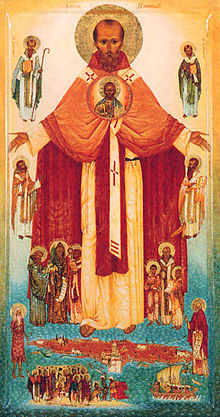Monday to Wednesday this week are 'rogation', or 'asking' days.
Rogation days in history
Traditionally these are days of prayer (particularly in the form of a procession accompanied by a sung litany of the saints), and fasting.
The three 'minor' rogation days before Ascension date back to the fifth century, instituted originally by Bishop Mammertus of Vienne (c470). The practice quickly spread throughout Gaul and Burgundy - the Council of Orleans in 510 ordered their use for example. Rogation days were not adopted in Rome, though, until the early ninth century.
Their key purpose is to appease God's anger at man's transgressions, to ask protection in calamities, and to obtain a good and bountiful harvest.
Rogation days in the Office
You can find the litany and prayers appropriately used with them in the Monastic Diurnal at pg (200) and the full chants in the Processionale Monasticum. If said privately, it is usually done after Lauds.
In earlier versions of the Monastic Office, the Rogations were marked as follows:
- On Monday there were three readings at Matins (from St Ambrose on the value of prayer at set times, and always) and a collect specific to the rogation day (set out below), I Vespers was of the votive office of St Benedict;
- On Tuesday the Votive Office of St Benedict was said; and
- On Wednesday the Office had three readings (from St Augustine) and a special collect.
In the 1962 monastic version, though, only the Wednesday readings and collect have survived (under the rubric of the Vigil of the Ascension). I can only presume that this is one of several unfortunate early manifestations in the Office of the modern resurgence of the heresies of presumed universal salvation (we all go to heaven; there is no-one hell) and rejection of the value of intercessory prayer.
The Monday readings in particular though, are rather lovely and important ones, and so I have put up them up on the Lectio Divina Notes Blog for your consideration.
| Orémus Praesta quaesumus omnipotens Deus: ut qui in afflictione nostra de tua pietate confidimus; contra adversa omnia tua semper protectione muniamur. Per Dóminum nostrum Jesum Christum, Fílium tuum: qui tecum vivit et regnat in unitáte Spíritus Sancti Deus, per ómnia sǽcula sæculórum. R. Amen. |
24
Let us pray.Grant, we beseech thee, O Almighty God, that we who in our tribulation are yet of good cheer because of thy loving-kindness, may find thee mighty to save from all dangers. Through Jesus Christ, thy Son our Lord, Who liveth and reigneth with thee, in the unity of the Holy Ghost, ever one God, world without end. |

